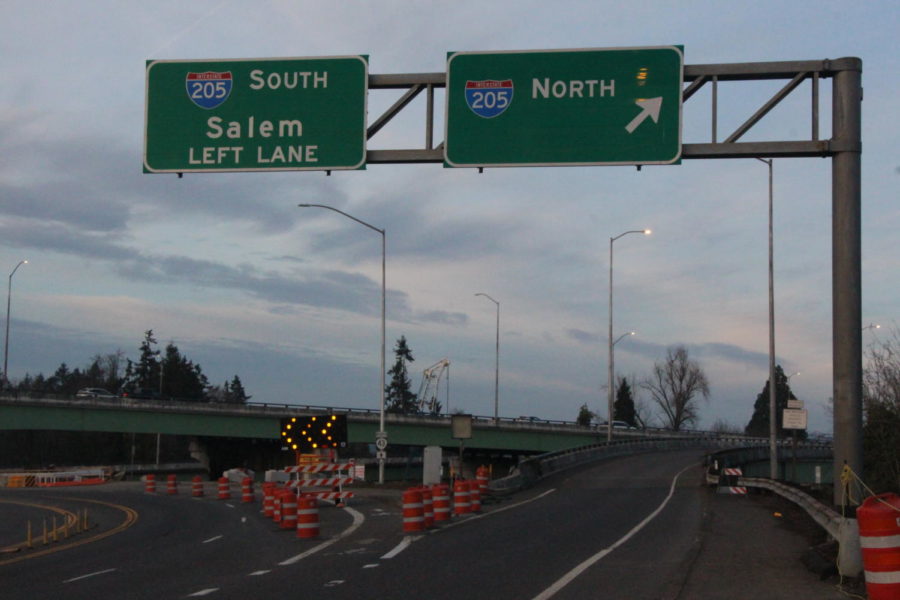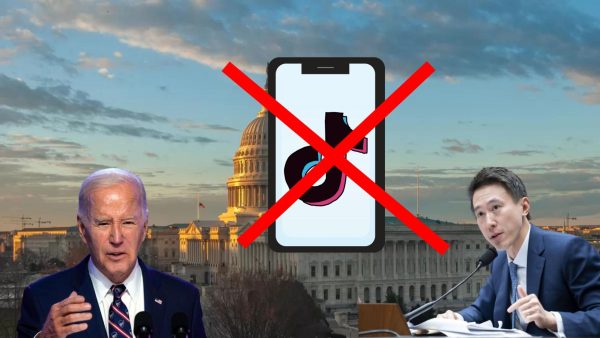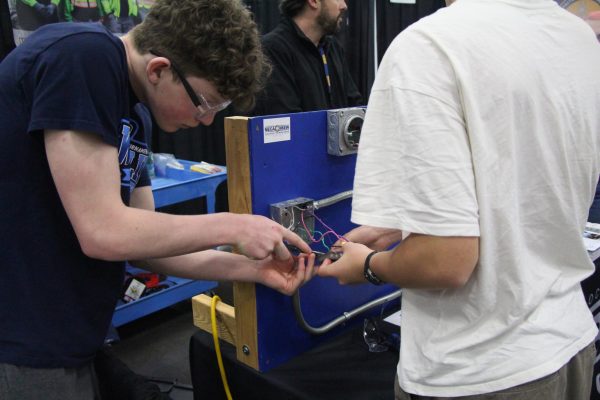I-205 is taking its toll
Is West Linn at the expense of a tolling project?
As of late 2024, tolls will be implemented on Interstate 205 (I-205). According to the Oregon Department of Transportation (ODOT), tolls are expected to be placed near the Tualatin and Abernethy bridges. Abernethy bridge is on the Willamette River, between Oregon City and West Linn.
The I-205 tolling project aims to add a third lane, along with improvements on bridges for better earthquake resistance. Tolls are expected to manage traffic congestion, while also raising revenue. The toll rates have not been confirmed yet, however ODOT is assuming prices will range from $0.55—2.20 per bridge. Drivers are tolled each time they use a toll booth, and they only pay for the trip they are taking on I-205. A low-income program is also being worked on, where low-income drivers may receive discounts or be exempted from toll rates.
ODOT’s project status includes expectations for the upcoming changes. ODOT expects that in the morning peak hours, from 7—9 a.m., “I-205 travelers would experience about 25% faster travel times, saving about 4 minutes.” In the afternoon peak hours from 4—7 p.m., “travelers between Tualatin and Gladstone would see up to 50% shorter travel times.”
Despite the possible benefits, with the location and effects of the tolls, West Linn will be disproportionately impacted. This has led to a variety of opinions within the community regarding the project.
Todd Jones, World History and AP U.S. Government teacher, has been a West Linn city council member since 2021. Last school year, Jones had students in his AP Government class learn and debate about their opinions on the interstate’s changes.
“We were choosing a number of topics that we knew were going to be important to our region, and to the state,” Jones said. “I know that tolling is going to be one of the major issues that our representatives and the legislature are going to be bringing up, so it is a very relevant topic right now.”
Before I-205 was built, the main routes used to travel through West Linn were Willamette Falls Drive and Highway 43. I-205 connects to I-5 through Tualatin and West Linn. After I-205 was created, it relocated traffic away from these streets and onto the interstate. Implementing a tolling system will have drastic effects on the residents of West Linn that rely on I-205.
“[Non-local drivers] are going to get on our local streets like Borland Road, Stafford Road, Rosemont Road, Willamette Falls [Drive], like Highway 43,” Jones said. “They’re going to start getting on our local roads to avoid paying the toll.”
ODOT’s strategies for mitigating diversion are in the process of the Environmental Assessment. On their frequently asked questions page it states, “a revised document with specific mitigation projects will be reviewed by the Federal Highway Administration (FHWA). Once the FHWA approves the document, mitigation measures will become part of the toll project, and ODOT will be responsible for implementation.”
“When we suddenly see the vehicular traffic [on] neighborhood streets picking up significantly, that’s going to have an impact on our congestion and is going to have an impact on quality of life, because so many more people are pouring through here,” Jones said.
Annamika Konkola, sophomore, is the chair of the Youth Advisory Council (YAC). Jake Frazier, senior, is the vice chair of YAC. Along with other members, they voice the city’s issues that affect the youth by attempting to identify and advocate for the needs of locals through projects or events. YAC meets online once a month to review certain topics. In their recent meeting, the I-205 tolling project was discussed.
“It will toll a section of a highway that is so heavily traveled by West Linn residents, it’s almost as if it’s specifically targeting us as a group,” Frazier said. “Because it’s going to go straight from Stafford to Oregon 213, which is like the Home Depot exit, which is some that most West Linn residents use on a daily basis.”
Each day, more than 100,000 vehicles use the portion of I-205. The I-205 project plan expects to relieve congestion in this area by, “adding a third lane in every direction on a seven-mile stretch of I-205.” But this can still be troublesome for West Linn residents.
“My work commute [would be affected] because I’m a youth soccer referee, so I go all over Portland,” Frazier said. “I’d have to drastically change where I drive if they toll that stretch, because that’s especially one of my main places I drive.”
When we suddenly see the vehicular traffic [on] neighborhood streets picking up significantly, that’s going to have an impact on our congestion and is going to have an impact on quality of life, because so many more people are pouring through here.
— Todd Jones
Working teenagers and adults’ commutes to work will be impacted by the new tolls. Avoiding the toll fee will be a big result with the changes on the interstate. Common routes to get to school, work, etc. may change for a majority of people.
However, there are other outcomes of the toll that could be beneficial for drivers.
“There might be an opportunity in these circumstances to foster more sustainable communities,” Konkola said. “The reality is, tolls will likely encourage slightly fewer single occupancy car rides. And West Linn is a community that is super dependent on individual automobiles instead of a strong public transport system.”
Toll costs will be lowered when multiple people are in a vehicle, compared to one person in a car paying a full toll. ODOT hopes that this will encourage people to take fewer single-person rides. Carpooling can help reduce greenhouse gas emissions, where less vehicles will be on the interstate. Different modes of transportation, like taking a public bus, have been suggested as well.
“I think that for the interests of students in West Linn, it probably is going to be a net negative,” Konkola said. “But I think, in theory, that we could use this as an opportunity to try to pursue more sustainable transportation and rethink how we’re getting around.”
Starting on Feb. 21, a 45-day comment period is available for the I-205 project. YAC plans to have two members draft a letter to ODOT, addressing the issues and concerns with the changes.
Your donation will support the student journalists of West Linn High School. Your contribution will allow us to continue to produce quality content by purchasing equipment, software, and continuing to host our website on School Newspapers Online (SNO).

Rachel Han, junior, is the Print Editor-in-Chief for wlhsNOW. She has found a passion in writing about opinion pieces and designing graphics. Aside from...

























![Game, set, and match. Corbin Atchley, sophomore, high fives Sanam Sidhu, freshman, after a rally with other club members. “I just joined [the club],” Sidhu said. “[I heard about it] on Instagram, they always post about it, I’ve been wanting to come. My parents used to play [net sports] too and they taught us, and then I learned from my brother.”](https://wlhsnow.com/wp-content/uploads/2024/03/MG_7715-2-1200x800.jpg)
![At the bottom of the third inning, the Lions are still scoreless. Rowe stands at home plate, preparing to bat, while Vandenbrink stands off to the side as the next batter up. Despite having the bases loaded, the team was unable to score any runs. “It’s just the beginning of the season. We’re just going to be playing out best by June, [and] that’s where champions are,” Rowe said.](https://wlhsnow.com/wp-content/uploads/2024/03/IMG_3077-1200x900.jpg)





![The teams prepare to start another play with just a few minutes left in the first half. The Lions were in the lead at halftime with a score of 27-0. At half time, the team went back to the locker rooms. “[We ate] orange slices,” Malos said. “[Then] our team came out and got the win.”](https://wlhsnow.com/wp-content/uploads/2023/10/IMG_2385-1200x800.jpg)



















































































Rob
Sep 7, 2023 at 3:31 pm
this just the beginning of tolls on roads, it’s nickel and dimeing us to death. I come from the new york, new jersey area where they put this in play, you get a little device on your mirror and you get a bill at the end of the month. I grew up on Staten Island and if you wanted to leave the island there was always a toll, unless you wanted to swim!
Belfy
Mar 2, 2023 at 1:22 pm
Government control for no reason.
john
Feb 28, 2023 at 5:52 pm
Don’t you think some are getting to greedy, this highway should have been with more lanes to start with. Better offer an auto-pass or traffic will be backed up
Sue Tollefson
Feb 28, 2023 at 3:25 pm
Unless you are going to toll every single freeway this is an unfair tax on those of us that use I-205 daily. It will put an unfair burden the surrounding communities in the form of increased traffic and congestion. NO TOLLS !!!
LC
Feb 28, 2023 at 2:26 pm
Build a third bridge first!!
Eldon
Feb 28, 2023 at 2:20 pm
So here it is finally admitted that this project is more about social engineering than it is about paying for costs of construction. It is about financial punitive discipline and not shared costs of improvement